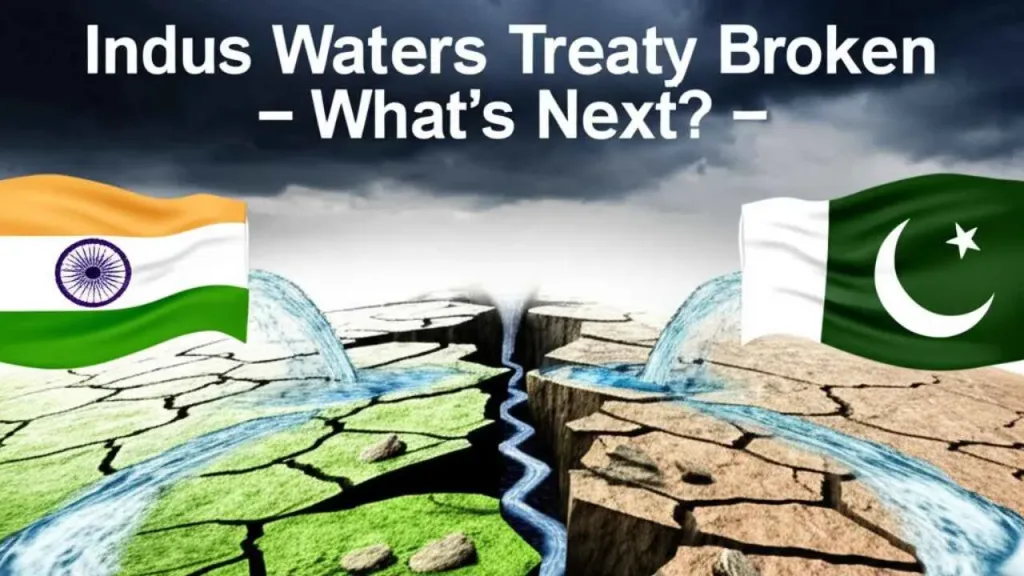India-Pakistan Tensions Escalate After Pahalgam Attack: Diplomatic Ties Strained, Treaties Tested
In the wake of a deadly terror attack in Pahalgam, the already fraught relationship between India and Pakistan has taken a sharp downturn, with both nations engaging in tit-for-tat diplomatic and strategic maneuvers. The fallout has triggered a domino effect of high-level meetings, treaty reconsiderations, and military posturing—marking one of the most intense standoffs between the two nuclear-armed neighbors in recent years.
The Spark: Pahalgam Attack and Immediate Response
The incident in Pahalgam, where multiple Indian civilians and security personnel were killed, served as a flashpoint. India swiftly convened a meeting of its Cabinet Committee on Security (CCS), where five major decisions were made—foremost among them, India’s unilateral withdrawal from the Indus Waters Treaty, a decades-old water-sharing agreement brokered by the World Bank in 1960.
In an unmistakable message, Prime Minister Narendra Modi, cutting short his diplomatic visit to Saudi Arabia, returned to lead the emergency CCS session. Following this, a flurry of diplomatic communications took place with global partners, including a high-level call from former U.S. President Donald Trump expressing solidarity.

Pakistan’s Mirror Reaction: Copying India’s Moves
Not to be outdone, Pakistan responded with its own high-level meeting—this time through its National Security Council (NSC). However, unlike India’s CCS, which comprises key cabinet ministers, Pakistan’s NSC appeared to be dominated by military leadership, sparking criticism that Pakistan’s governance in crises remains under de facto military control.
Pakistan declared India’s move as an “act of war,” accused New Delhi of violating international norms, and hinted at retaliatory measures, including the potential suspension of the Shimla Agreement—a bilateral accord from 1972 that has long underpinned India-Pakistan diplomacy.
Shimla Agreement: Backbone of Bilateral Diplomacy
The Shimla Agreement, signed after the 1971 war by then Indian PM Indira Gandhi and Pakistani PM Zulfikar Ali Bhutto, included several pivotal clauses: both nations committed to peaceful dispute resolution, ruled out third-party mediation, and accepted the Line of Control (LoC) as the de facto border in Kashmir.
If Pakistan does officially renege on this agreement, it would mark a significant policy shift—one that could allow India to frame future actions, including military, as responses to a collapsed diplomatic framework.
Diplomatic Domino Effect: Tit-for-Tat Measures
The escalation has been rapid. Following India’s announcement to exit the Indus Treaty:
- Pakistan closed its airspace to Indian aircraft and threatened to block third-country trade routes, especially those passing through UAE.
- Islamabad expelled 30 Indian diplomats from its High Commission.
- India responded by withdrawing security from the Pakistani High Commission in Delhi.
- Both nations withdrew from the SAARC visa exemption scheme and reclassified each other’s defense attaches as persona non grata.

India’s Strategic Silence, Measured Moves
What distinguishes India’s posture this time is a deliberate calm. While Pakistan issued bellicose warnings—including vague nuclear threats and statements about civilian casualties—India maintained a measured tone, briefing global embassies stationed in Delhi about its every move. These briefings were symbolic, underscoring New Delhi’s commitment to rule-based actions and legal diplomacy.
India also conducted multiple readiness drills. The Indian Navy, positioned in the Arabian Sea, issued the cryptic yet resolute message: “Fleet in formation, force in action.” The Indian Air Force resumed practice sorties with Sukhoi jets, signaling preparedness.
Opposition Support and Domestic Unity
In a rare show of unity, opposition leaders including Mallikarjun Kharge and Rahul Gandhi were briefed in an all-party meeting. They emerged expressing unequivocal support for the government’s stance on national security. This bipartisan solidarity could empower the Modi administration to take more assertive actions, should the situation demand it.
Strategic Isolation of Pakistan
Adding to Islamabad’s diplomatic woes is the silence from Beijing. With trade ties between India and China now surpassing $120 billion, and China enjoying a surplus, Beijing is unlikely to risk its economic relationship with India for Pakistan’s sake—especially in an environment where U.S.-China tensions are high, and China seeks stability in its foreign engagements.
What Lies Ahead?
India’s withdrawal from the Indus Waters Treaty was not merely symbolic—it sent a clear message that conventional tools of diplomacy have been exhausted. If Pakistan proceeds to abandon the Shimla Agreement, India could potentially leverage that void to justify future actions, including a push into Pakistan-Occupied Kashmir (PoK).
Reports suggest the Indian government has already instructed the armed forces to remain on high alert. Northern Command chief Lt. Gen. Upendra Dwivedi is expected to visit Pahalgam, while intelligence operations are reportedly focused on eliminating terror infrastructure in Kashmir.
A return to routine airstrikes or limited cross-border skirmishes appears unlikely. Instead, signs point toward a more expansive and possibly territorial strategic response—a long-term recalibration of India’s Pakistan policy.
Conclusion: Quiet Before the Storm?
As night falls, tension lingers. Social media is ablaze, international observers are watching closely, and New Delhi’s corridors of power remain abuzz with back-to-back briefings. What’s clear is this: India’s patience has reached its limit. And Pakistan’s reactive mimicry has only highlighted its diplomatic and strategic unpreparedness.
Whether this turns into another cold confrontation or a game-changing military shift will depend on what unfolds over the coming days. But one thing is certain—the subcontinent is on edge, and the world is watching.
